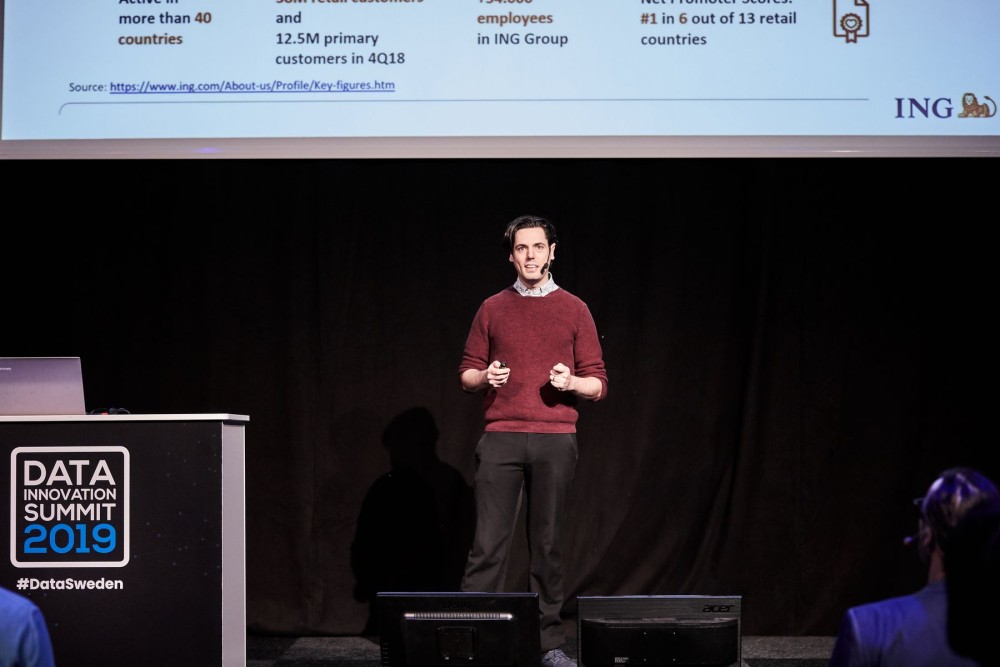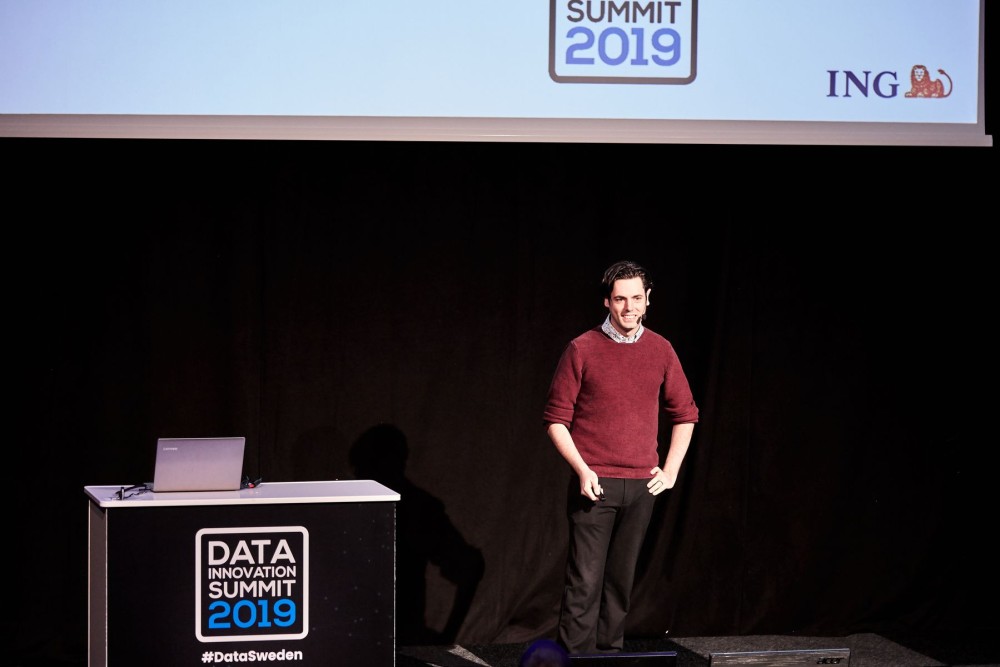Data science in banking may sound a bit boring. However, data scientists have had their hands full with working on some really interesting challenges that banks have been experiencing these past several years.
As Dor Kedem, Data Scientist at ING Bank, presented to us at the Data Innovation Summit 2019, banks in Europe have been facing a fair share of tumultuous times, and banking has been one of the most challenging environments in which data scientists can work.


Some of the challenges are:
- Historically low interest rates, including decreasing floating payments and banks revenues.
- Introduction of more regulation – Besides GDPA, banks have to comply with other regulations such as PSD2 and MiFID II. the PSD2 regulation, which is a Payment Service Directive for opening banking. It regulates that banks have to open their customer data and services to any third-party their customer enables, like FinTech companies. While the MiFID II provides harmonised regulation for investment services across the 30 member states of the European Economic Area.
- FinTech companies give customers banking services without the need to ever engage with a bank. This puts banks in a disadvantageous position as these services were only exclusive to them.


This dog-eat-dog environment leaves banks fighting for their spot and looking for ways to prosper. In his talk, Dor made efforts to answer the question: How does a bank differentiate itself from the other players on the market?
How can banks succeed in the competitive finance scene?
Before jumping on the solution, we have to go back to the basics – the purpose of an organisation.
As Dor affirms, ING’s purpose is to empower people to stay a step ahead in life and business.
The three pillars supporting ING’s strategy of creating differentiating customer experience are:
- Analytics
- Innovation
- Developing new business models.
And data science is at the core of all three above, states Dor.


Analytics efforts at IGN Bank
In terms of data and analytics, ING Bank is engaged in multiple analytics efforts in order to stay ahead.
They are divided into two types of initiatives:
1) Analytics training transforming the entire organisation with its 50,000 employees to engage in analytical projects, tools and insights, and easy transition to the world where data is the source for new business models.
2) Data science, AI and big data projects in various domains such as customer interaction, customer dialogue, risk & pricing, intelligent operations, people analytics, innovation & beyond banking, finance, wholesale banking and regulatory technology.
Dor, in his presentation, focused on the field of customer interaction. Dor himself is a member of the One-to-One Analytics – a division dedicated to driving all customer interactions by data.
The One-to-One Analytics team’s goal is to enable the entire organisation to understand what customers want, when they want it and on what channel, to drive business objectives and make customers extremely happy.
ING’s Analytics team is composed mainly of data analysts, data scientists, data engineers and customer journey experts who work hand-in-hand in campaigns.


The need for model industrialisation at ING Bank
In an effort to explain ING’s need for model industrialisation, Dor shares a real case study with credit card acquisition.
Let’s imagine that a customer journey expert wants to create a campaign and contact customers to acquire a new credit card (via website offering or direct communication) on Black Friday, and offer them either a regular or platinum credit card. However, their CJ expert needs to source relevant customers to offer them these two credit card options.
Their options are: ask a data analyst to do some fancy BI, plot customer engagements on different demographics and come up with business rules for selection; or ask a data scientist to do a likelihood model that will rank customers based on past behaviour and engagements.
In the majority of cases, the ball falls in the data analyst’s court. There are many reasons why this happens, usually since there are more data analysts than data scientists, and data scientists are usually busy with many projects.
One of the most prevalent is the fear of automation. People are apprehensive towards accepting a new way of working that might automate a function they are responsible for.
But regardless of the reasons for the majority going to data analysts, we are missing out on certain capabilities when we don’t use models, warns Dor.
As he previously said, ING Bank’s mission is to enable and empower users, such as customer journey experts, to expand their selection of customers and reach out to relevant customers. When we are relying only on BI, we are limited by our personal understanding of the world and our data analyst capabilities, adds Dor.
This is why it’s crucial to make sure that you are empowering people with any data science project you want to implement and not replace them.
In this regard, Dor states that ING’s Analytics objective is to democratise model building and empower data analysts and enable them to create models the same way that data scientists would. The key in this is to make it super easy and fast, so data analysts feel empowered and see it as a way to learn more about their customers, i.e. gain personal satisfaction and efficiency.
The Model Factory of ING Bank
In order to make model industrialisation possible across the organisation, ING Bank implemented a Model Factory product developed by data scientists, data analysts and data engineers. The Model Factory allows building customer models without reinventing the model building process, but relying on a recipe and using building blocks.
The model, in its essence, is a sort of scoring function that provides likelihood for a customer buying a product. The results of the model are eventually integrated into all ING Bank systems and communicated to data analysts and customer journey experts.
As the product should be compatible with a wide variety of use cases, it should contain a lot of features. But the key elements of the Model Factory are the building blocks. The most important are:
Data sources
- Unified data lake into which different data dumps and streams from ING sources are conveyed.
- Data engineers use the data dumps in the data lake to process them into structured data sources
- Data scientists and data analysts use them to build analytics features tables – a list of features of the customers.
Testing and validating models: Data sets creators
Validation of models is one of the key challenges for data scientists. ING solved it by developing cross-validators as building blocks that are readily available. When someone wants to build a model, they take one from the box and use them as defaults.
Model building
ING relies on Spark as their machine learning framework. Additionally, they employ AutoML with Python packages.
Fairness
Fairness is especially crucial for ING, particularly in a use case when deciding which customers are going to be invited to a meeting with a mortgage advisor, as opposed to receiving a phone call for counselling. Even though the end goals is to sell more mortgage, they also have to make sure they give this opportunity to a selection of people representing the entire customer population.
The principal value of the Model Factory is that these building blocks are already available when data analysts start working on a business case; they don’t need to start from scratch with features.


Wrapping up the product
In summary, Dor states that ING are able to engage their data analysts and customer journey experts with the Model Factory product, as it enables model creation, without coding, by using data scientists best practices and cumulative efforts.













Add comment